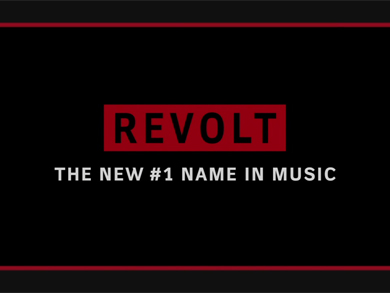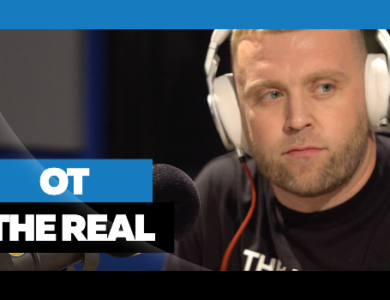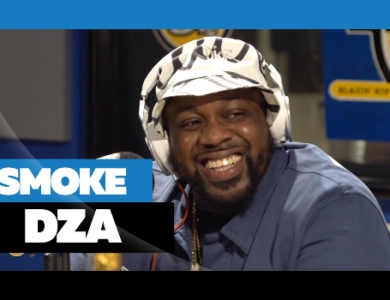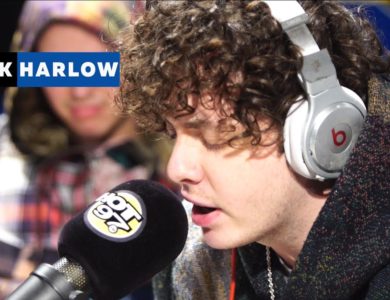It was in May 2014 that Di-Ann Eisnor met Lupe Fiasco. Eisnor is an executive at Google’s Waze, an angel investor, and a “neogeographer,” while Fiasco is a Grammy Award-winning rapper; the two were united as Henry Crown Fellows at the Aspen Institute. “We hit it off,” recalls Fiasco. Soon, they got to speaking about shared concerns: inequality in America, ghettoized neighborhoods, and the lack of diversity in the innovation economy. See how Lupe gives back. Hit the jump to see more.
They had a shared belief that good ideas could come from anywhere, and began to wonder whether there wasn’t a way to start hunting for business ideas—and funding them—in neglected neighborhoods around the country. As an investor, Eisnor routinely listened to business pitches, like the kind you see in Shark Tank. What if she and Fiasco started their own fund, and actively started listening to pitches in the last places Silicon Valley would go looking for them? So they did just that, pooling a million dollars into something they dubbed the Neighborhood Start Fund.
Lupe Fiasco and Di-Ann Eisnor
They began to look for neighborhoods where they might pilot their idea. Though viewers of HBO’s Girls might think that Brooklyn is synonymous with gentrification, that’s only true of part of the borough, large swaths of which remain troubled and low-income. Eisnor had previously spent time in the neighborhood of East New York, and began to look there. As she asked around, though, she found a natural partner in the adjacent—though similarly challenged—neighborhood of Brownsville.
Another entrepreneur, Liveperson CEO Robert LoCascio, had already trained his sights on Brownsville, guided in part by Pernell Brice, whom LoCascio had hired to run his foundation, the Dream Big Foundation. Brice and LoCascio were already looking to establish a kind of hub for entrepreneurship in the neighborhood, and had reached out to three locally renowned bakers in Brownsville about opening a café that could eventually double as a space for coworking and entrepreneurship classes.
On November 13, the energies of these people and others will come together at that space in an unprecedented sort of business pitching competition. Eisnor, Fiasco, and other judges will hear business ideas from would-be Brownsville entrepreneurs. Finalists in the competition (Brownsville residents can apply here) will compete for $5,000 to turn ideas into prototypes, and will also have access to mentorship and free technology services.
On a recent Thursday, Eisnor sat in the cavernous, soon-to-be-renovated space, hearing initial ideas in an informal meet-and-greet with Brownsville natives. One woman proposed a subscription box service, another a ride-share service for seniors, a third an on-demand beauty service. If you scour Google Images for contestants on Shark Tank, it’s hard to find much melanin. But of the group pitching Eisnor, every entrepreneur was black (most, too, were women). That, of course, was the point of soliciting pitches from a neighborhood that is about 75% African-American, 20% Latino.
“I’m already so happy with the ideas that are coming out,” Eisnor told me after hearing the last pitch. “There’s something interesting in each of them, and they were viable.” Her and Fiasco’s ambitions are not small—the goal is to create a $100 million company out of the fund. They hope to be in about a dozen neighborhoods by the end of 2016. “Brownsville is just the beginning,” says Fiasco.
Made in Brownsville’s Quardean Lewis-Allen (left), together with fellow Brownsville natives Darius McCray (center) and Willie Minter.
BEING AN ENTREPRENEUR IS MORE ABOUT BEING STUBBORN, TENACIOUS, HARD-WORKING, AND FOCUSED, RATHER THAN HAVING ANY SPECIFIC SKILL SET.
There are two central innovations in the Neighborhood Start Fund. The first is to look for ideas in overlooked neighborhoods. The second is a financial mechanism designed to redirect profits from a successful Brownsville startup (or a Compton startup, or Anacostia startup) right back into the economy of Brownsville (or Compton, or Anacostia). “We’re putting half the profits back into the neighborhood,” in the form of further local investments, says Eisnor. It’s a commitment legally baked into the terms of the fund she and Fiasco have set up. “That’s the flywheel.”
Eisnor says that the fund is emphatically not a philanthropic venture. “It’s very important to me that this is not philanthropy, that we have real economic engines and real wealth coming to these neighborhoods,” she says. “If one success comes out of this, then other investors will take it seriously. We want to be the on-ramp to something more sustainable.”
She has a serene certainty that it will work. “It’s totally faith-based, as was Waze, as was everything I’ve done,” says Eisnor. “My personality is really intuitive. If I have a sense that something needs to happen, I’m going to make it happen.”
In addition to crime and other urban problems, neighborhoods like Brownsville often suffer from underfunded public schools and low educational attainment. What does Eisnor say to a skeptic, then, who might wonder if Brownsville residents have been adequately trained to found a $100 million company? “My first statement is: So? You don’t have to believe it. We’ll prove it. I’d also say that some of the best companies are from people who didn’t get to finish their education. Being an entrepreneur is more about being stubborn, tenacious, hard-working, and focused, rather than having any specific skill set.”
What’s more, she can already point to Brownsville native sons and daughters who are making strides, like Quardean Lewis-Allen, 27. Lewis-Allen grew up on Howard Avenue, deciding he wanted to be an architect at age eight. He wound up studying at SUNY Buffalo and the Harvard Graduate School of Design, recently returning to his neighborhood to found Made in Brownsville, a nonprofit that offers employment and mentorship to at-risk youth, centered around design projects. Lewis-Allen was struck by the fact that many nonprofits were operating in Brownsville, but when it came time to contract design work—for an anti-violence campaign, for instance—they might hire a firm from midtown Manhattan. Now Made in Brownsville retains some of that branding work right in the neighborhood.
Lewis-Allen shares with the Neighborhood Start Fund and Dream Big the belief that the story of Brownsville, like the story of so many other neglected communities, is one of wasted—yet great—potential. “There’s no shortage of ideas in Brownsville,” he says.













